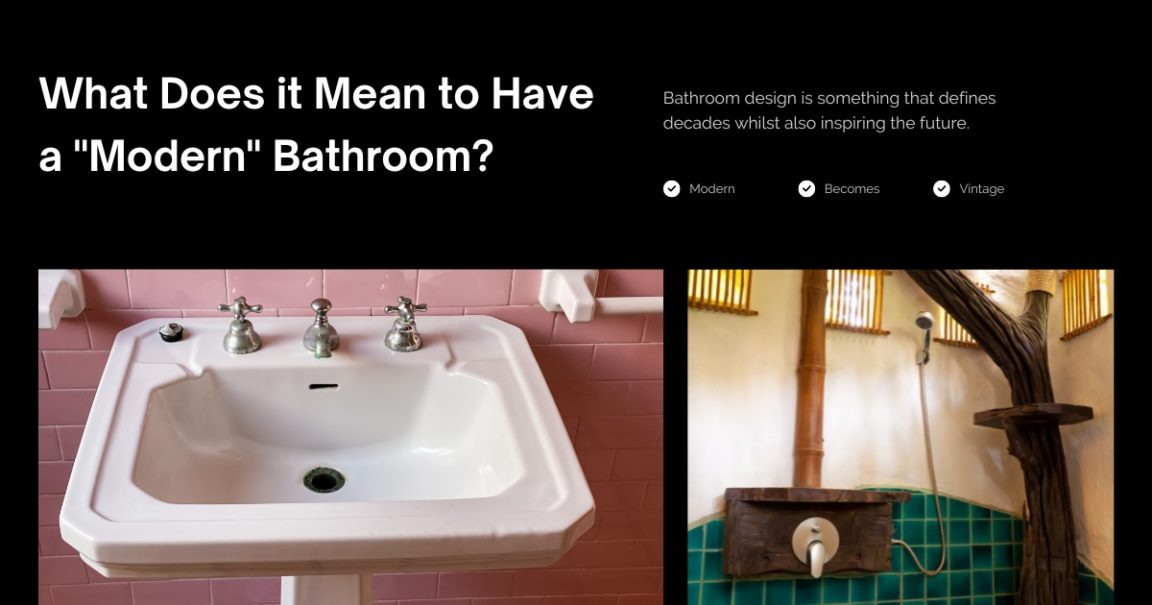For those of us who have been paying attention to interior decor trends for a few decades, the idea of a modern bathroom can feel like a meaningless statement. After all, with trends shifting and changing all the time, the loose grasp on meaning that “modern” appears to have makes that term appear very elusive.
The fact is that in the 21st century especially, the churn of trends and tastes across the design spectrum has ramped up considerably. This has led to “modern” trends having a significantly shorter shelf life than they once did. In truth, it can feel like we put too much weight on the term, perhaps as a way to contextualise a design as being at the cutting edge at that moment, only for the opulent newness of it all to eventually fade with the times.
With all this in mind, it’s worth looking back at modern bathroom designs through the decades and trying to understand just how it is that we got here.
1950s Bathrooms: The Bold and the Beautiful

The classic 1950s bathroom seems like it was made for Technicolor. Unlike a lot of designs of the 2010s and 2020s, which will prioritise subtlety and class, the mid-century wanted nothing more than bold colour choices that would define a space. Greens, pinks, oranges; these bright, borderline campy colour choices matched with angular, blocky shapes that made everything feel very layered with square bathroom vanities and multicolour tile walls being common sights.
Whilst it may not blend well with the minimalism that tends to be echoed throughout the modern design landscape, it’s hard to deny that these bold, unapologetic colour choices have a strong impact to them. This is certainly a trend we can see coming back and being reborn in the future.
1960s Bathrooms: Edwardian Elegance With a Twist
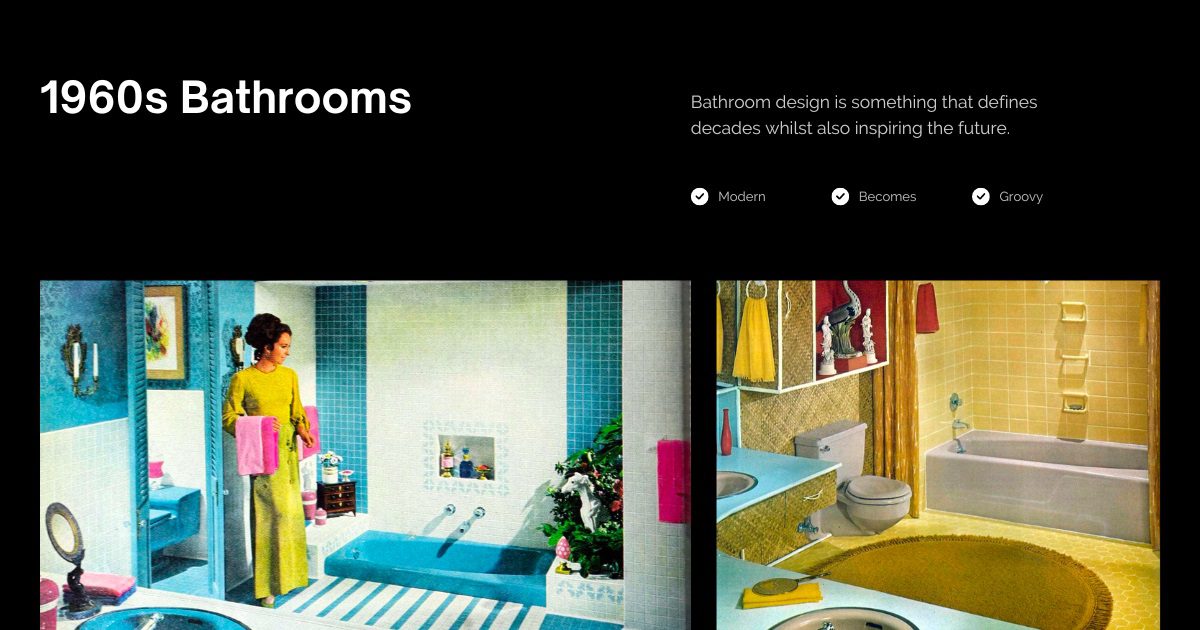
Ahhh the neo-Edwardian period of bathroom design; lavatories of the 1960s are truly a sight to behold. A stark shift away from the very bold singular colours of the 1950s, the 1960s bathroom is one that is filled with patterned bathroom tiles in a wide array of bright colours. Whilst patterns, such as florals and art deco designs may have taken the limelight, the emphasis on colour remained in the 1960s bathroom design landscape, with one of the most popular standout colour choices being blush pink.
Beyond colour, we also started to see a slow shift in the ways bathrooms were structured. Smooth, geometric bathroom vanities were soon accompanied by the introduction of shower baths which became popular around this decade. Pendant lights, a wide world of shelf options, and hugely unique patterns on floors; this was a big step forward in the road towards personalised, expressive bathroom design. However, whilst the 1960s may have felt like a big step from the 1950s, the next decade would redefine what the modern bathroom could be.
1970s Bathrooms: Divisive, Distinct, Divine
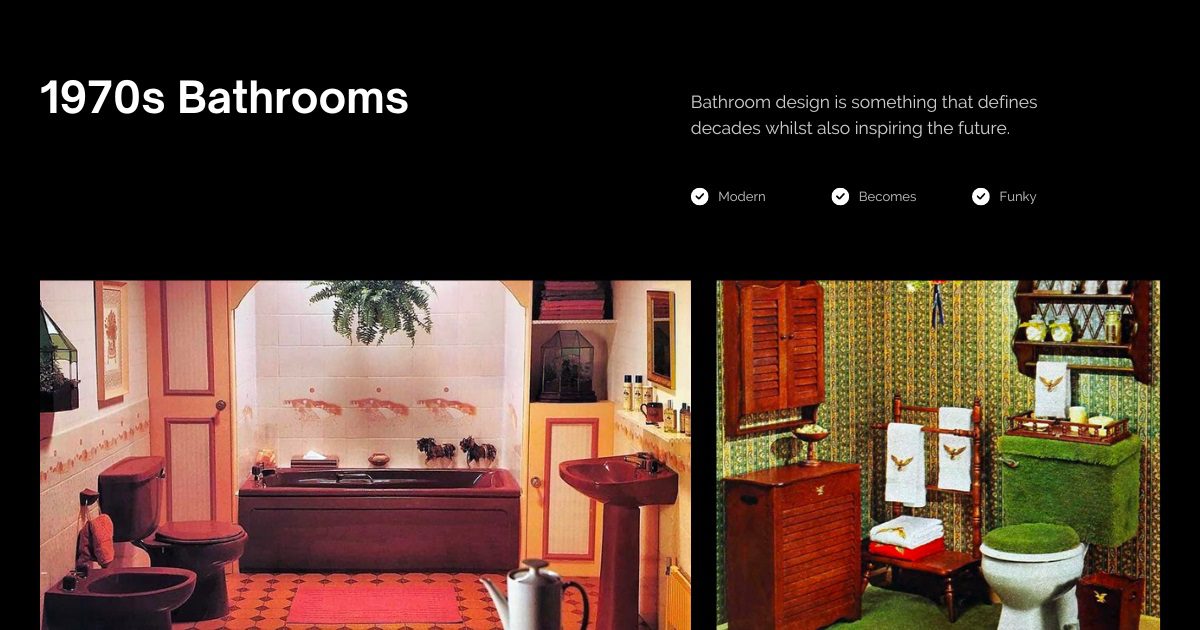
I’m not sure there’s a decade in the 20th century more divisive than the 1970s in terms of design. For many, it is a decade in which good taste was thrown out the window, and would not return for quite some time. However, for those of us that do appreciate the unique and the bold, the 1970s bathroom is a delightfully mystifying step into the unknown when compared to the decades prior. The 1970s was considered a time of risk-taking, with the step into the personality-driven design of the 1960s winning out against the traditional in some magnificent and baffling ways.
Whilst the variety on display can make it hard to really develop a cohesive blueprint for the 1970s design principles, that doesn’t mean there weren’t some common traits that would come to separate this decade from the rest. Avocado greens, mustard yellows, earthy browns; the colour choices of the 70s home feel as if they’re taken straight from an idyllic farmhouse of heartland America, and that’s honestly what much of the style is reminiscent of. There was a lushness, a plushness, a rustic feeling that we have never truly shaken since. It’s no wonder then that the 1970s is considered by some to be the most significant inspiration for decor and design that came after it, taking elements of the decades prior but turning them into something more timeless, if not significantly more divisive.
1980s Bathrooms: The Peak of Retro
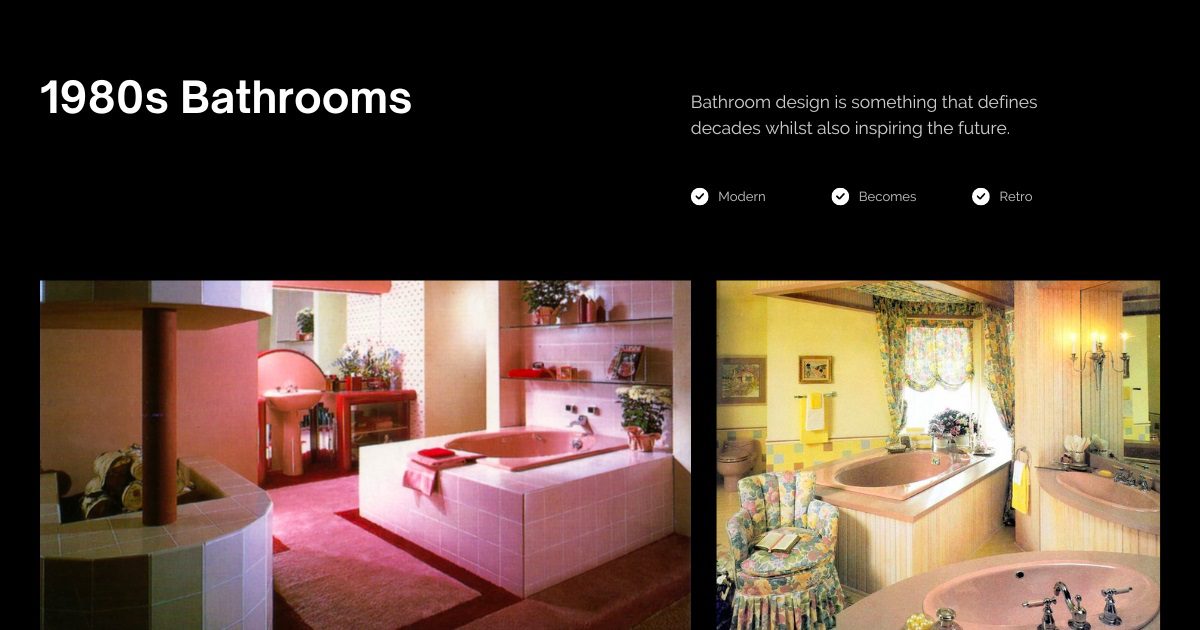
There’s not as much to say regarding big shifts between the 1970s and 1980s in terms of what we consider the modern bathroom design. The emphasis on personality and gaudiness of the 1970s was still certainly felt in the 1980s, and aside from a distinct brightening of the palette, often drawing in bright, bold colours more associated with the 1950s kitsch, the 1980s bathroom stayed on a course laid out by its predecessor.
However, what the 80s lacked in bold new elements, it made up for in perfecting and crystalising what we now think of as the vintage bathroom aesthetic. While elements of the 1970s can still be found in 2023’s modern stone bathrooms, the 1980s is far more of a time and place. Opulence over function, vibrancy over all else; the 1980s bathroom design is an undeniable time of big choices, the likes of which have really not been seen since.
1990s and Beyond: The Pursuit of the Minimal
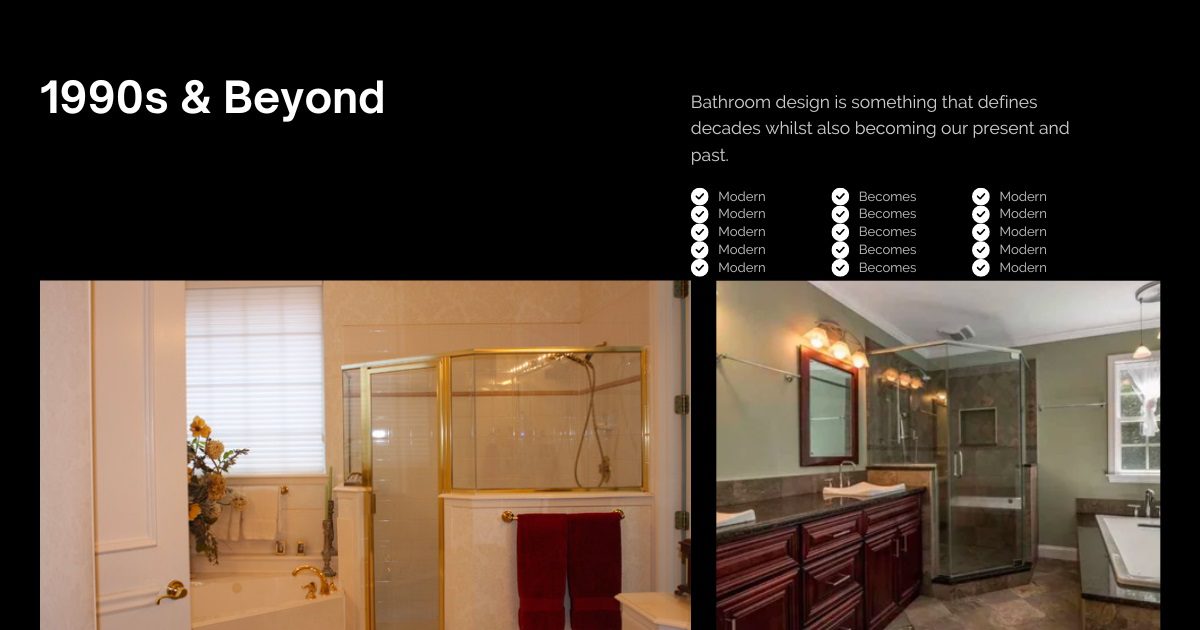
It is in the 1990s that bathroom designs start to become a little more familiar, with Laura Ashley and the diamond tile coming in with a bold shift toward uniformity. This preppier, more classy sensibility would also be seen across the 2000s with the shifts from wallpapers to woods and marbles and a more actively minimalist take on bathroom design finally winning out by the 2010s. Tasteful plant displays on a white backdrop, and black and white checkered floors; we had reached peak monochrome, a far way from the 1950s’ bright colours and the 1960s’ busy patterns.
Whilst newer bathrooms may not have the same garishness as some decades past, that doesn’t mean they are by any means dull. From Otti vanities for Australian bathrooms to the living decor of the natural design movement, the shift toward minimalism has allowed for a more intentional approach to each piece in a space, allowing for subtlety in mood and personality. Greenery, natural light, small shifts in shades; newer bathrooms are welcoming, clean places, and that should not be discounted in terms of their cultural legacy.
~
Designs are never truly gone. When we look at emerging bathroom design trends, it’s easy to forget what they draw from, and how much of future design already exists as a currently-underutilised style of bygone eras. So, keep this in mind when designing your own bathroom, and find your future with a little help from a beautiful past.


